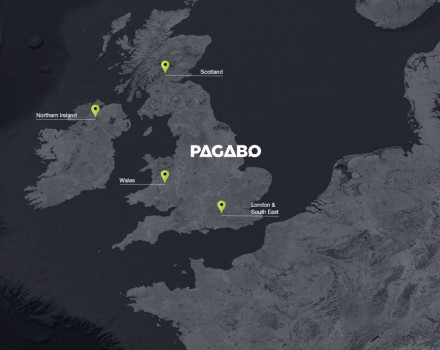Designed by multi-disciplinary design, engineering and project delivery company, BakerHicks, the scheme is the first of its kind in the world to replace existing overhead high voltage electricity transmission infrastructure, which has been in place since the 1960’s, solely to enhance the landscape.
BakerHicks provided detailed design and construction support to principal contractor and sister company, Morgan Sindall Infrastructure, and cable supplier, Nexans. This included delivering an enabling works package, civil and structural (C&S) design, overhead line design, and electrical design of the cabling sealing end compounds (CSEC) at each remote end of the cable installation. It also included ensuring the design conformed to the National Grid’s relevant transmission specifications and assisting in the development of a safe and efficient methodology for the removal of 22 towers.
Burying the cables underground was preferred as it was felt that screening or camouflaging the towers would not have sufficient impact. With the A35, a busy trunk road, to cross, BakerHicks’ engineers specified an innovative horizontal directional drilling (HDD) technique to take the cables under the road. This removed the need for diversions or temporary road systems, ensuring minimal impact on the local community, which was a key concern throughout the project. Public ‘drop in’ sessions were held right from the very beginning in 2015 and BakerHicks liaised with local communities, landowners, and other stakeholders throughout to ensure the proposed solutions worked for all involved. The routing of the cable system was also carefully designed to minimise impact on the area’s archaeological treasures and ecology, which includes a number of rare and protected flora.
The terrain of the South Dorset Ridgeway with its steep inclines and rocky outcrops presented a particular engineering challenge, not just in the undergrounding of the cables themselves, but in designing and constructing the infrastructure required. Specialist equipment and temporary haul road designs more often associated with Alpine passes were needed. BakerHicks’ C&S team carried out extensive ground engineering assessments and research on road surface materials to ensure the vehicles carrying the 45-tonne cable drums could safely cross the challenging landscape, including inclines of up to 16%.
BakerHicks’ engineers worked closely with National Grid, Dorset AONB and other stakeholders to ensure the solution was as safe and sustainable as possible, whilst also ensuring the cable trenches were invisible once completed. This included reducing the depth of the cable trenches to limit the earthworks required on the steep slope, then encasing them in concrete and using layers of biodegradable tensile matting and additional warning tiles over the top. Cutting edge 2,500mm2 enamelled copper Milliken type cable was specified to allow the maximum amount of electricity be transmitted through the cable, with minimal energy loss through the generation of heat. Using this industry leading technology, with innovative installation design solutions across very challenging terrain, delivered significant cost savings to National Grid and OFGEM.
Lucas Wille, director for power at BakerHicks, says:
This was a ground-breaking and highly complex project which required detailed knowledge of the technical challenges involved. We have a highly specialised team, whose expertise, experience and attention to detail give National Grid confidence in us to deliver them industry leading solutions that are sustainable and will last the test of time. We have been involved right from the very beginning of this project, and it is immensely rewarding to see this fantastic scheme complete and the goal of enhancing the beauty of the area achieved. It leaves a lasting legacy, enabling locals and tourists alike to enjoy the stunning scenery of the South Dorset Downs for generations to come.
Paul Hamnett, Senior Project Manager for National Grid, said:
This is the culmination of years of complex engineering and construction work which would not have been possible without the dedication and expertise of the site team and the patience of the local community. Our goal has always been to enhance this beautiful landscape, and now we’re seeing the fruits of our labour with the fields we used for civil engineering works being reinstated and the successful removal of 8.8km of overhead cables and 22 pylons.
BakerHicks are also supporting National Grid on two further VIP schemes, in the Peak District and Cotswolds AONBs, providing detailed design and construction support on the former and Front End Engineering Design on the latter.







